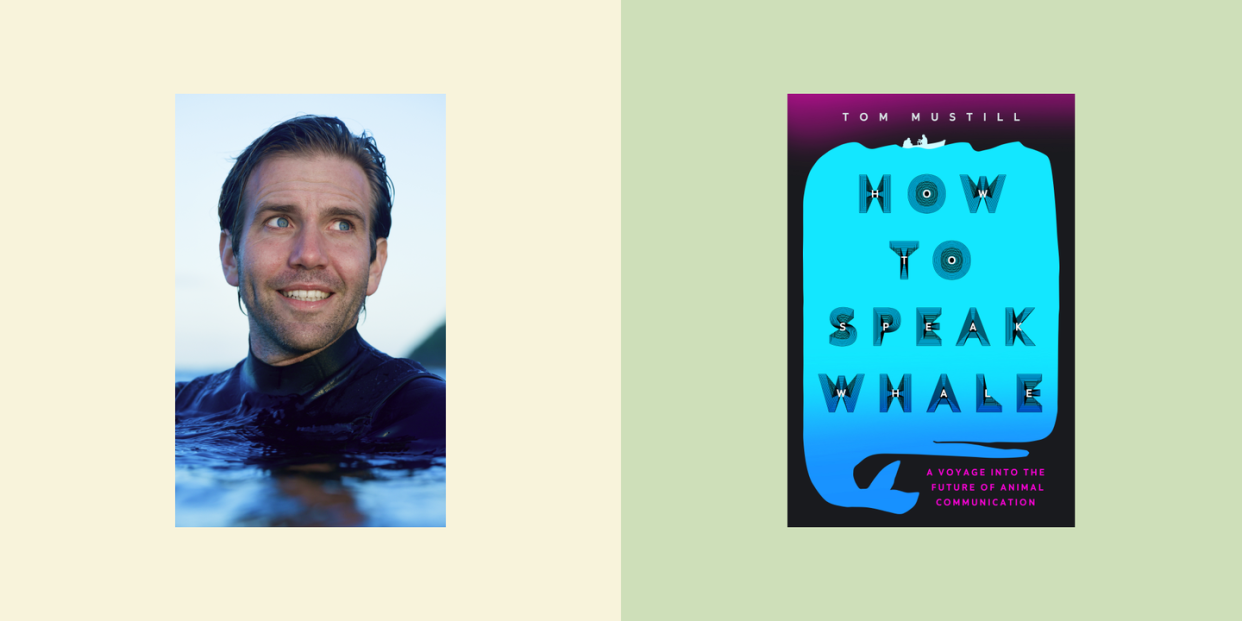“How to Speak Whale” Is a Love Letter to the Beauty and Power of All Life on this Planet

After awe, what? Naturalist and filmmaker Tom Mustill thought he was going to die when a 30-ton humpback whale breached and landed on the two-person kayak he was piloting near Monterey. The massive impact drove him and his co-kayaker deep into the ocean, but when they surfaced, miraculously still alive, he “was exhilarated. What a thing to look upon, to feel.” The incident, captured on a phone by a bystander, went viral, with over six million views (you can see it here); a whale specialist caught sight of it and told Mustill that the whale purposely “twisted and veered away” to clip them rather than land full-on and almost certainly kill them. After such an experience, some people would never venture near water again. Others might capitalize on their viral celebrity, or go the Ahab route, spending the rest of their lives seeking out the whale that nearly finished them, for revenge. On the other hand, there’s the path Mustill chose, determining instead to find the answer to this question: “What, if anything at all, was the humpback that leaped onto us trying to say?”
Mustill’s hunger to figure this out sent him on an investigative journey through all we know, and don’t, about the way species, particularly whales and other marine mammals, communicate with one another, and, at times, us. The result is a thoughtful, wide-ranging, and moving book that combines history, reportage, science, and Mustill’s own process around his near-death collision with a mammoth sentient being from another world. As with the documentary My Octopus Teacher, the Helen McDonald memoir H is for Hawk, Richard Powers’s novel The Overstory, or Ed Yong’s An Immense World, which explores the wildly divergent and often extraordinary sensory abilities of myriad animals, How to Speak Whale is in many ways a love letter to all the life on this planet besides ours: its beauty, its deep strangeness, its power—and our longing, often unrequited, to understand and connect with it. And, as with any current exploration of the natural world, the book is also filled with grief about how much of that wonderland is gone, or going. Mustill refers to himself at one point as “a sort of nature war reporter.”
Mustill’s book, of course, doesn’t tell you how to speak whale, or any other animal language. It’s not much of a spoiler to reveal that Google Translate from animal to human communication doesn’t exist yet. Moreover, while we humans conflate vocalization with language, and while it’s clear that animals do communicate with one another, it doesn’t follow that animal vocalization is “animal language” or that vocalization the way our species does it is the only way communication can occur. After all, when your cat twines around your legs at the same time every evening, you know he wants dinner whether he meows or not. Part of the considerable pleasure of How to Speak Whale, in fact, is the tension between all the facts Mustill uncovers and the mysteries that remain undeciphered. He interviews scientists, whale song researchers, AI innovators, the academics who created the Cetacean Translation Initiative, and underwater camera people, among others, explaining the immense amount of tantalizing, empirical evidence that what we call “whale song” is a created, patterned, rhyming, collaborative sonic thing that whales do with intention and innovation. However, to this day, no one really knows why. Mustill writes, “Bowhead whales, which can live for more than two centuries, sing songs that have been compared to jazz.” What are they doing? We don’t know. Scores of researchers, outfitted with ever more sophisticated equipment, have spent decades with whales and other marine mammals, trying to translate what goes on in their heads. Some of the results are unintentionally comic. When a prominent cetacean expert painstakingly set up a mirror underwater to see if dolphins could pass the famous “mirror self-recognition test”—the gold standard of self-awareness and what we consider to be consciousness—two young male dolphins passed with flying colors, then used the mirror for “‘sequential intromission attempts’…meaning they had sex and watched themselves.” Having fun, messing with us, or both?
When Mustill goes to swim with humpback whales near the end, he talks about the sublime experience of “being seen by something incomprehensible and enormous.” A whale begins to sing, and he basically submerges himself underwater in the song. “My lungs and airspaces and limbs all vibrated, and I felt I had become the medium it was talking in.” Does it matter if we know what the whale was “saying”? Literally vibrating with mystery, Mustill’s clear answer is no. “What matters,” he writes, “is they are there.”
Stacey D’Erasmo’s novel The Complicities, in which a whale plays a major role, is just out.
You Might Also Like

